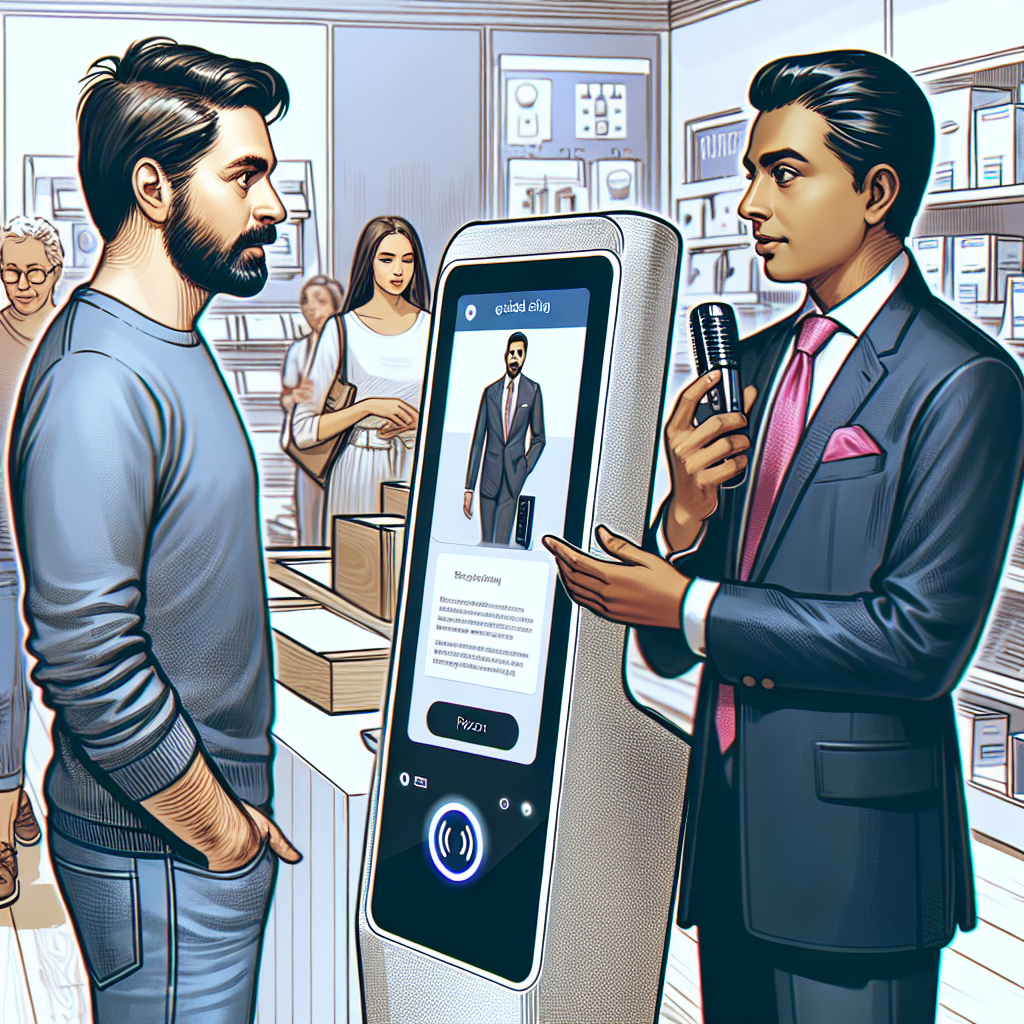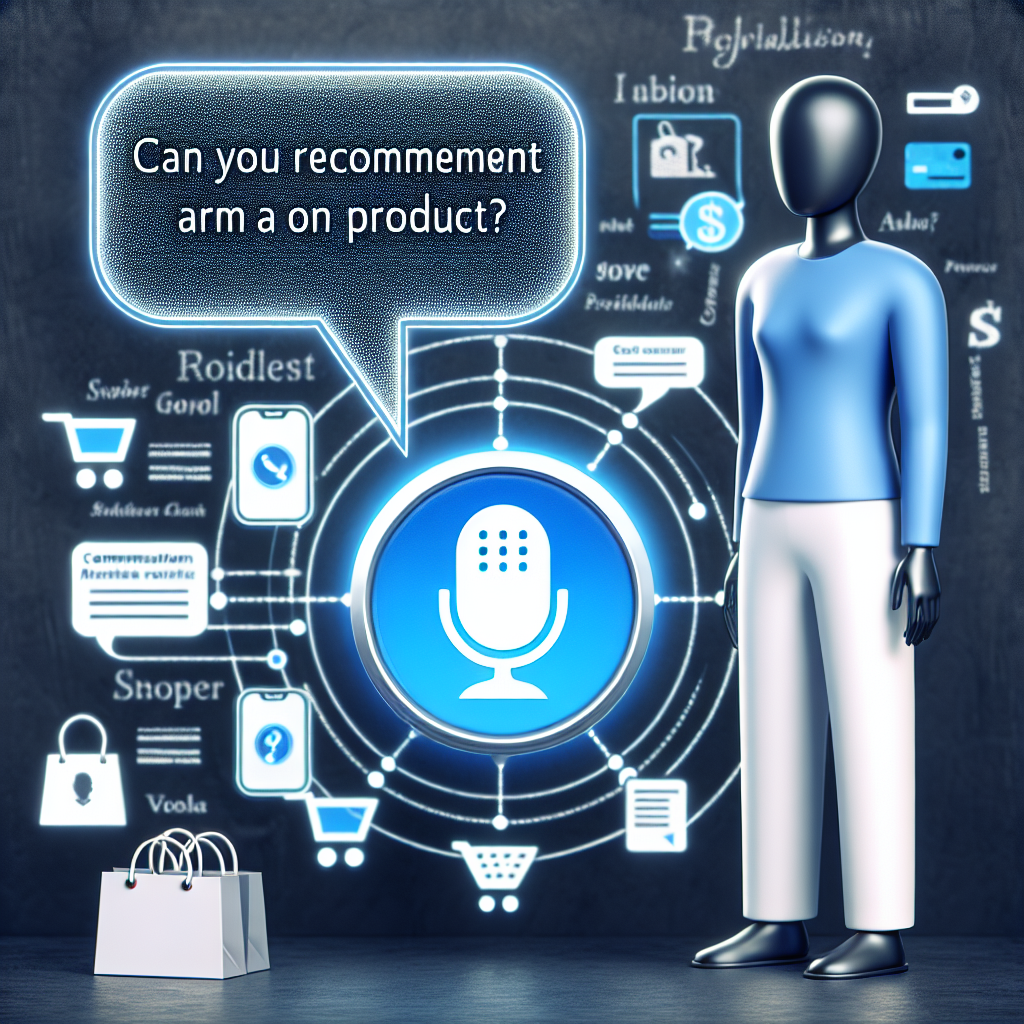
In an era where customer experience has become a differentiating factor for brands in the retail world, voice-activated guided selling systems are carving a niche. This trend is widely viewed as a game-changing innovation that has the potential to revolutionize customer interactions and sales processes in the retail sector.
Voice-activated guided selling can be best described as an intelligent system that leverages voice recognition technology to provide relevant, personalized product recommendations to customers. Just as a well-trained salesperson would in a physical store, these systems guide customers throughout their shopping journey, simplifying purchase decisions and boosting overall customer satisfaction.[1]

Voice-activated guided selling blends AI-powered recommendation engines with natural language processing to effectively parse and understand customer needs based on voice inputs. This innovative technology goes beyond merely assisting customers with queries. Instead, it proactively guides consumers in their buying journey, often leading to bigger cart sizes, increased sales, and enhanced customer loyalty[2].
Given the rapidly evolving retail landscape, integration of voice-activated guided selling technologies is becoming imperative. In addition to offering an innovative touchpoint for customer interaction, these systems position brands to stay agile and remain competitive in the face of rising customer expectations.
In conclusion, Voice-Activated Guided Selling systems represent a transformative step in retail, marrying the efficacy of technology with the personal touch of human interaction. As retailers continue to raise the bar on customer experience, these systems are set to play a crucial role in shaping the retail landscape of the future. [3]
Voice-activated guided selling is a transformative technology that enhances product recommendations, significantly improving customer experience and engagement. Voice-activation technology relies heavily on two other technologies - Natural Language Processing (NLP) and machine learning to carry out its functions consistently. Understanding the mechanics behind these key components provides valuable insight into their seamless operation.
Natural Language Processing (NLP) is a field of AI that gives machines the ability to decipher, understand, and respond to human language in a valuable way. It is built upon complex models that allow a machine to accurately interpret spoken language, turning it into text data that the machine can respond to. A detailed introduction to Natural Language Processing can be found here.
Linking voice activation and NLP technologies allows voice assistants to interpret customer needs communicated through language. These technologies can generate relevant product suggestions based on the user's inputs, allowing a more personalised shopping experience. This is where machine learning, the second technology, comes into play.
Machine learning, a subset of AI, enables machines to learn from experience. It utilizes algorithms that ingest vast amounts of data, identify patterns within that data, and adjust its operations based on the learnings. For businesses, machine learning can enhance voice-activated selling by learning from previous customer data to provide highly accurate product recommendations. More about Machine Learning can be found here.
Overall, the combination of these technologies - voice activation, natural language processing, and machine learning - empowers voice-activated guided selling tools to revolutionize product recommendation processes. They work in unison to understand, interpret, learn from customer data, and then provide real-time, targeted, and relevant product suggestions that align with customer need and queries. This superior level of customer engagement has the potential to significantly boost conversion rates and overall business performance.
In the fast-paced digital realm, turning towards Voice-Activated Guided Selling is a proactive way for businesses to evolve with technology. This innovative technology integrates a voice interface with highly potent Artificial Intelligence (AI) algorithms to cater to the customers in an elegantly tailored manner. With an ability to use conversational languages, these voice systems can understand intricate customer needs and provide effective product recommendations.
An ideal example of voice-activated selling is the intelligent personal assistant, Google Assistant. By incorporating advanced AI technology, it not only takes up user queries but also understands user preferences and unique shopping patterns to promote the most relevant products.

Integration of AI with voice systems brings a competitive edge in deciphering voice commands. These systems use natural language processing, machine learning, and predictive analytics to fully grasp customer interactions. This enables them to provide highly personalized recommendations that align with individual preferences and purchasing histories.
Furthermore, AI supports voice systems in tracking customer behavior across different platforms. This multi-channel data provides comprehensive insights into customer behavior and preferences, ensuring the most optimal product suggestions. The success of such technology lies in delivering a personalized shopping experience that keeps customers engaged and fosters brand loyalty.
To maximize the potential of voice-activated guided selling, businesses need to continuously upgrade and invest in AI. Along with the necessary technological infrastructure, a clear understanding of customer preferences complements the effectiveness of these intelligent systems. With the right balance, businesses can enhance their customer-centricity and deliver unique, responsive, and effective product recommendations.
Voice-activated guided selling has been a breakthrough technology making waves within the retail sector. Here, we highlight two key examples of retail giants who have transformed their product recommendation approach through the adoption of this cutting-edge tech.
Amazon, known for being consistently one-step ahead in utilizing technology to enhance user experience, has integrated voice-activated guided selling via its smart assistant, Alexa. Shoppers on Amazon can ask Alexa for product recommendations based on their preferences and purchasing history. Alexa is equipped with an advanced AI system, capable of understanding complex languages and responding with personalized recommendations, resulting in improved customer satisfaction and increased sales. It's an impressive demonstration of the potential of voice-activated tech in retail.
On the other hand, Alibaba, China's largest online retail platform, launched its Tmall Genie, a voice-activated speaker that doubles as a shopping assistant. Shoppers can instruct Tmall Genie to search for products, read reviews, make comparisons, and even order products, all through voice commands. The success of Genie propelled Alibaba into the forefront of voice-activated guided selling, showcasing the practicality and efficiency of this technology in a large-scale retail environment.
Both Amazon and Alibaba have demonstrated the potential benefits of incorporating voice-activated guided selling. These case studies highlight how the technology enhances user experience, personalizes product recommendations, and drives increased revenue. Furthermore, they validate the belief that voice-activated guided selling will continue to be a significant trend in the future of retail.
Voice-activated guided selling refers to the use of voice recognition technology to guide customers through the selling process. This advanced technology is gradually becoming crucial in businesses due to the numerous advantages it offers. Specifically, it maximizes sales growth, customer satisfaction, and operational efficiency.

Businesses that implement voice-guided selling systems often observe significant increases in sales. Due to its conversational nature, customers find it easier to engage, and it effectively nudges them towards making a purchase. Thus, it converts leads into paying customers and boosts sales growth.
Moreover, voice-guided selling systems significantly enhance customer satisfaction. Customers enjoy the personalized buying experience these systems provide, leading to increased loyalty and repeat purchases. The system’s ability to understand and respond to verbal commands makes shopping less cumbersome and more enjoyable.
The boon of operational efficiency is yet another significant asset of these systems. They automate various aspects of the sales process, such as product recommendations and order processing, thus reducing the burden on staff. They provide a rare combination of speed, accuracy, and convenience that most conventional sales techniques simply cannot match.
In conclusion, the future of sales heavily relies on innovative solutions like voice-activated guided selling. Its manifold benefits are already transforming businesses by optimizing sales, bolstering customer satisfaction, and enhancing operational efficiency. Clearly, the implementation of voice-guided selling systems is not only a technological advancement, but also a strategic avenue to stay relevant in a rapidly evolving market.
The unfolding of the digital era has paved the way for remarkable innovations, with Voice-Activated Guided Selling being one of the latest game-changers. A modish fusion of artificial intelligence (AI) and machine learning, Voice-Activated Guided Selling is making waves, particularly in the e-commerce industry. As we head into the future, the domain of voice-activated selling is brimming with immense potential set to elevate customer experiences.
The centrepiece of these advancements are smart virtual sales assistants, powered by AI, designed to enhance customer interaction by understanding their needs and delivering personalized product recommendations. Think Google Assistant or Amazon's Alexa, but purely tailored for e-commerce.
Emerging technologies such as Edge Computing and Natural Language Processing (NLP) are promising to unlock new possibilities. Edge computing, for instance, will allow faster processing of voice commands, providing real-time personalized product recommendations to users.
Another groundbreaking development trending in Voice-Activated Selling is the integration of NLP. With its potential to comprehend complex voice instructions or comments, NLP can bring about an unprecedented level of customer interaction. It can discern customer tone, sentiment, and context. This, in turn, will lead to enhanced accuracy in tailoring product recommendations.
There's also the potential for Deep Learning algorithms to fine-tune and evolve the capabilities of voice-activated selling engines. Guided by these algorithms, engines could eventually learn to understand user preferences at a granular level, delivering a shopping experience like never before.
Lastly, we may see these voice-activated platforms becoming more ubiquitous as they continue to integrate with different applications. Imagine unveiling your voice-activated guided selling onto digital billboards, social media platforms, or VR systems. As we usher into the future of AI and machine learning, the innovations are only set to get more transformative.
Start your free trial for My AI Front Desk today, it takes minutes to setup!








